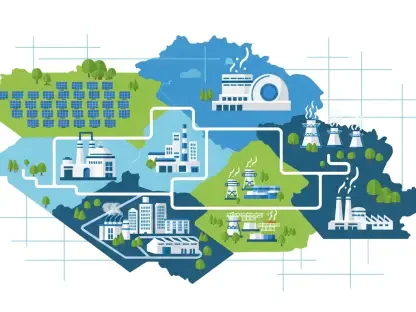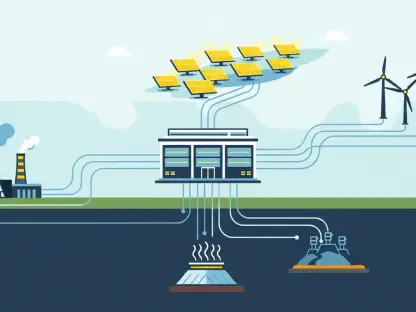Christopher Hailstone has extensive experience with energy management, renewable energy, and electricity delivery. He is also our Utilities expert and provides valuable insights on grid reliability and security. Today, we discuss the impact of artificial intelligence (AI) on global electricity demand and how it intertwines with our energy sources and environmental policies.
How is the surge in artificial intelligence use affecting global electricity demand?
The rapid adoption of AI technology is significantly increasing global electricity demand. AI data centers require substantial power to process and analyze vast amounts of data. According to the International Energy Agency (IEA), by 2030, the electricity consumption by these data centers will match the current usage of Japan. This drastic increase underscores the challenges and opportunities AI presents in energy management.
Can you explain the IEA’s forecast for electricity consumption by data centers by 2030?
The IEA forecasts that by 2030, AI data centers will more than double their current electricity consumption, akin to the electricity demand of an entire country like Japan. This surge is largely fueled by the global rush to implement AI applications across various sectors. Such an increase necessitates robust planning and development of energy infrastructure to support this demand sustainably.
What role will renewable energy sources and batteries play in meeting this demand?
Renewable energy sources, complemented by battery storage, are expected to play a crucial role in meeting the growing electricity demand from AI data centers. The IEA anticipates that half of the additional electricity required will come from renewables. Batteries will help store energy generated from these sources, ensuring a stable and reliable power supply even when renewable generation is intermittent.
Which fossil fuels are expected to see increased demand due to AI-powered data centers?
Fossil gas and coal are expected to see increased demand as AI data centers expand. Despite the push for renewable energy, the significant energy requirement of these centers means that fossil fuels will continue to power a considerable portion of this demand at least until the end of the decade.
How does the IEA expect nuclear energy to impact electricity generation by 2035?
The IEA projects that nuclear energy, specifically through small modular reactors, will become more prominent by 2035. These reactors are seen as providers of stable and low-carbon electricity, crucial for offsetting the intermittency of renewable energy sources and ensuring a continuous power supply for AI data centers.
What are the projected changes in emissions from data centers by 2035?
Emissions from electricity use by data centers are projected to rise by as much as 180% by 2035, making them one of the fastest-growing emission sources. This increase is primarily due to the reliance on fossil fuels. However, the IEA also points out that the overall impact on greenhouse gas emissions could be mitigated as AI helps optimize other sectors, reducing their emissions.
How is the United States planning to meet the increased electricity demand for its AI technologies?
In the United States, a significant portion of the increased electricity demand for AI technologies will be met through fossil gas. The country is also looking at coal to support AI data centers, driven by policy directions to boost coal production. Additionally, renewables are expected to be the second-largest source of additional electricity supply, contributing to the overall energy mix.
What steps is President Trump taking to ensure AI data centers are supported by coal-powered infrastructure?
President Trump has taken measures to ensure AI data centers are supported by coal-powered infrastructure. He has signed an executive order directing cabinet members to identify regions where coal-powered facilities can support these centers. This move underscores the administration’s commitment to boost the coal industry amidst the growing needs of AI technologies.
How is electricity demand growth for data centers in China going to be met?
In China, the demand growth for electricity in data centers will primarily be met by a mix of coal and renewable energy sources by 2030. Currently, coal powers most of the data centers, but there is an increasing shift toward renewables to balance the energy mix and address environmental concerns.
How does the IEA address concerns that AI could accelerate climate change?
The IEA suggests that concerns about AI accelerating climate change might be overstated. They argue that while AI data centers do contribute to emissions, their impact is relatively small, accounting for less than 1.5% of total energy-related emissions. Moreover, AI applications could lead to more efficient operations across various sectors, potentially reducing overall greenhouse gas emissions.
What are some examples of how AI could help reduce overall greenhouse gas emissions?
AI can significantly reduce greenhouse gas emissions by optimizing various processes. For instance, AI can detect methane leaks in fossil fuel operations, enhance manufacturing processes to minimize energy waste, and improve home heating and cooling systems’ efficiency. These applications lead to substantial savings in emissions, outweighing the carbon footprint of AI itself.
What barriers need to be overcome to maximize the environmental benefits of AI?
To maximize AI’s environmental benefits, several barriers must be addressed. These include the initial cost of AI technologies, the need for skilled professionals to implement and maintain AI solutions, and the development of supportive infrastructure. Additionally, regulatory frameworks must evolve to support the widespread adoption of AI while ensuring stringent environmental standards.
What does the IEA mean by the risk of “rebound effects” in AI’s emission reduction potential?
The IEA warns about “rebound effects,” where the efficiency gains from AI in one area could inadvertently lead to increased emissions elsewhere. For example, if AI enables the fossil fuel industry to extract resources more cheaply, it could spur greater demand for these fuels, thus driving up emissions despite the efficiency benefits AI provides.
How could AI potentially drive greater demand for fossil fuels, despite its efficiency benefits?
Even as AI makes processes more efficient, it could increase fossil fuel demand by lowering operational costs and boosting productivity. This, in turn, may encourage higher consumption of fossil fuels, especially if the energy demands of AI data centers outpace the growth of renewable energy supply, leading to greater reliance on fossil fuels.
How can societies, governments, and companies work together to ensure AI is used responsibly and effectively?
To ensure AI is used responsibly and effectively, collaboration among societies, governments, and companies is essential. This can be achieved through setting robust regulatory frameworks, investing in renewable energy solutions, and promoting research and development in AI technologies. Additionally, transparency and accountability in AI applications can foster trust and ensure that their deployment aligns with environmental and societal goals.
Do you have any advice for our readers?
My advice would be to stay informed and engaged with the developments in AI and energy sectors. Advocate for policies that promote sustainable energy use and support initiatives that harness AI for environmental benefits. As consumers and citizens, our choices and voices can collectively drive positive change towards a more sustainable future.









